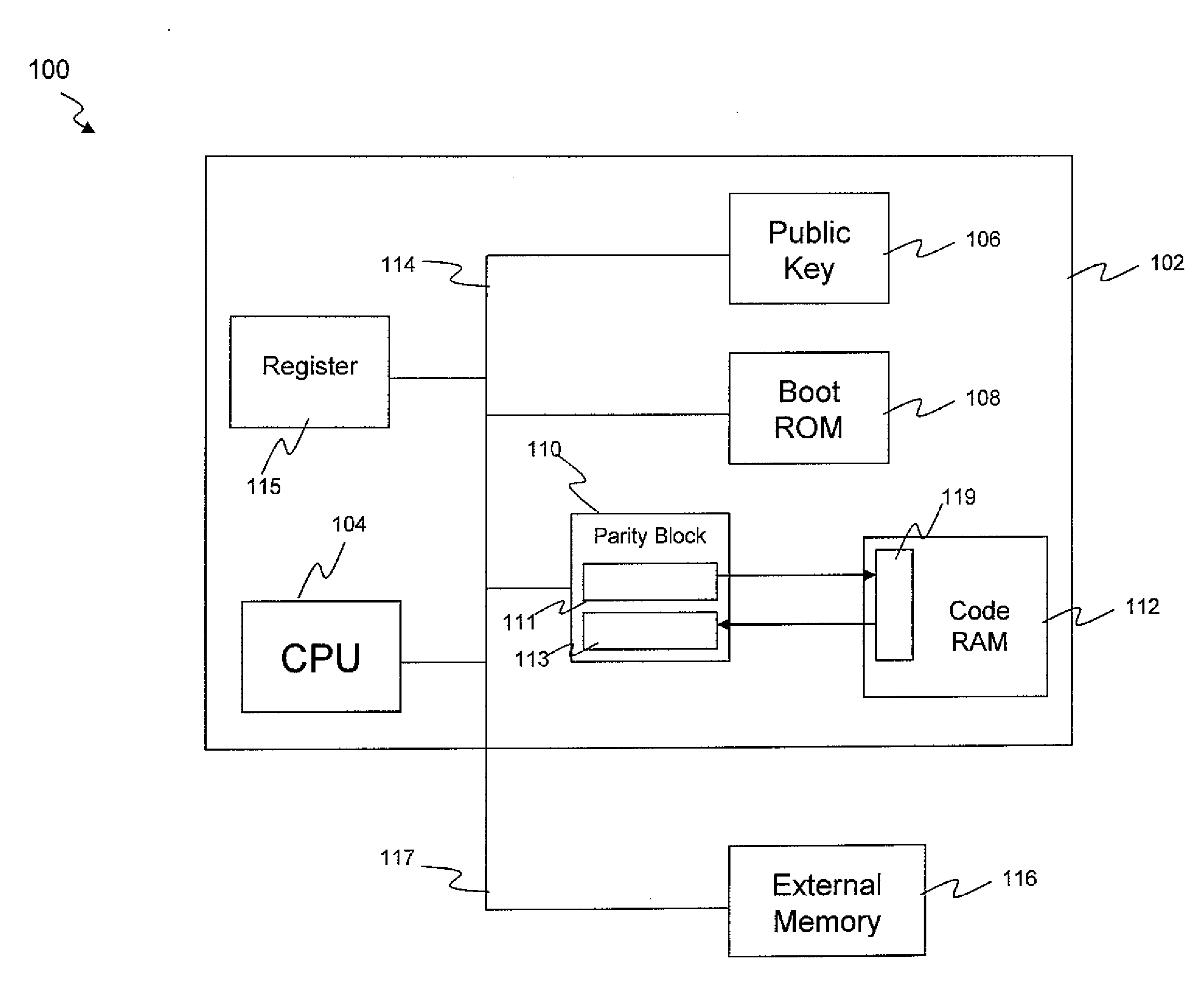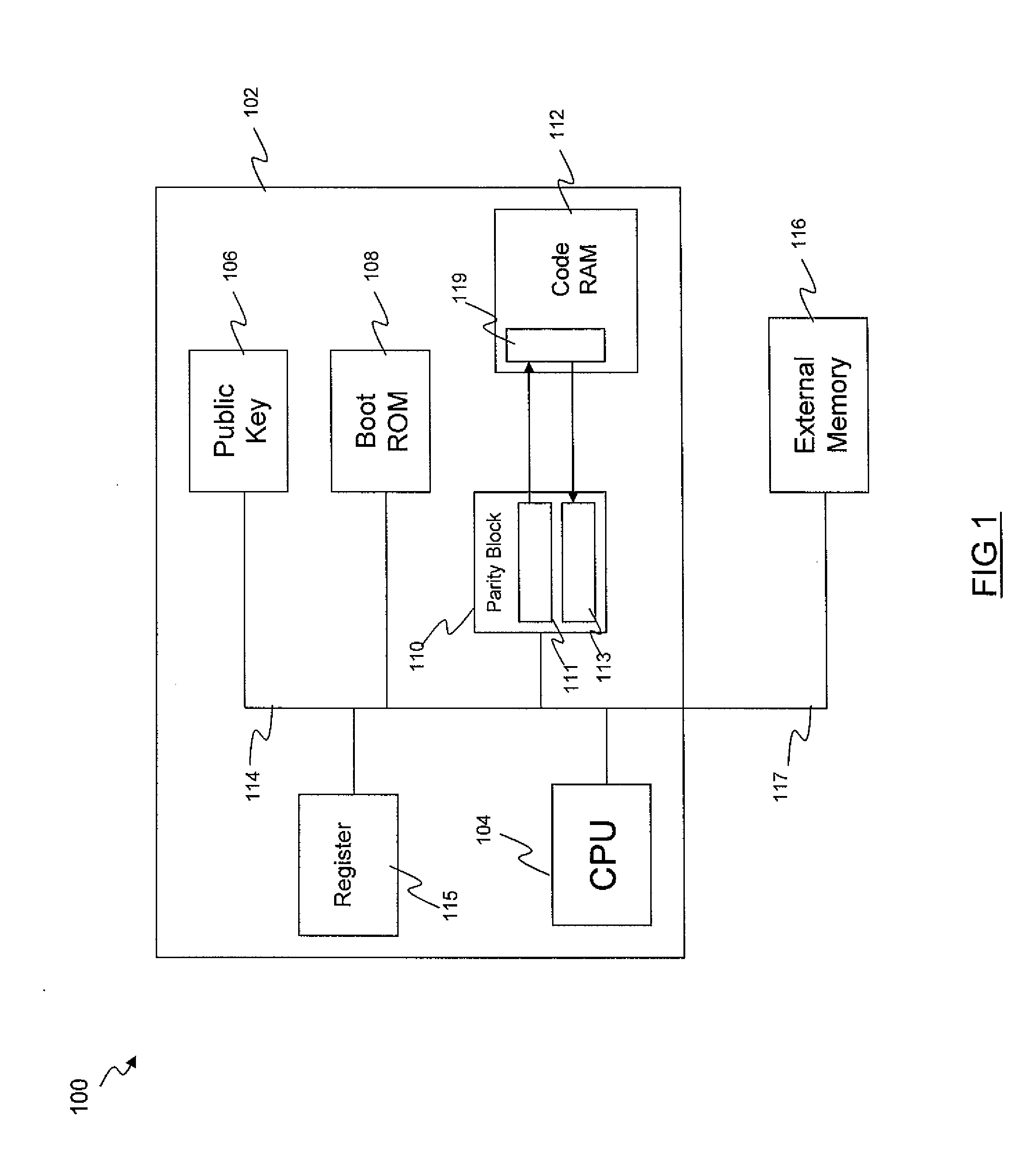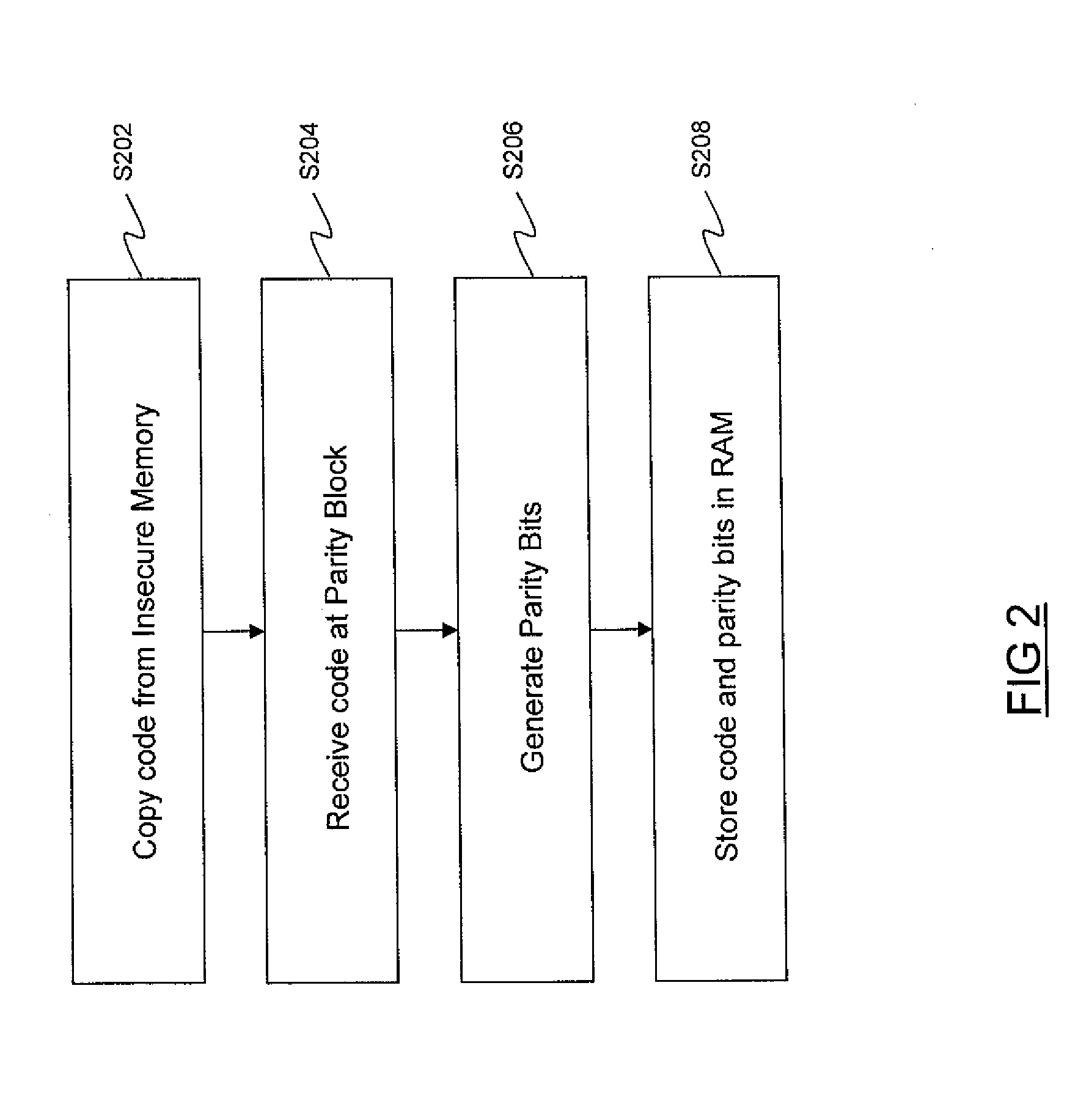Loading secure code into a memory
a technology of secure code and memory, applied in the field of loading secure code into a memory, can solve the problems of not being able to change at a future date, storing code in a rigid manner in a rom is often undesirable, and the system is less secure than befor
- Summary
- Abstract
- Description
- Claims
- Application Information
AI Technical Summary
Benefits of technology
Problems solved by technology
Method used
Image
Examples
Embodiment Construction
[0022]Reference is first made to FIG. 1, which illustrates a computer system 100 according to a preferred embodiment. The system 100 comprises a chip 102 and an external memory 116. The external memory 116 is external to the boundary of the chip 102 (off-chip memory), and is thus not secure. It is referred to herein as an insecure memory, meaning that it is accessible to third parties.
[0023]The chip 102 comprises a CPU 104, a public key 106, a boot ROM 108, a parity block 110, a code RAM 112, a register 115 and a bus 114. The parity block 110 comprises a parity generation block 111 and a parity checking block 113. The bus 114 couples the CPU 104, public key 106, boot ROM 108 and parity block 110 to each other. The code RAM 112 is coupled to the parity block 110. The insecure memory 116 is coupled to the bus 114 on the chip 102, via an external link 117. Logic 119 controls access to the code RAM 112.
[0024]Code can be stored in the insecure memory 116 which is to be loaded into the co...
PUM
 Login to View More
Login to View More Abstract
Description
Claims
Application Information
 Login to View More
Login to View More - R&D
- Intellectual Property
- Life Sciences
- Materials
- Tech Scout
- Unparalleled Data Quality
- Higher Quality Content
- 60% Fewer Hallucinations
Browse by: Latest US Patents, China's latest patents, Technical Efficacy Thesaurus, Application Domain, Technology Topic, Popular Technical Reports.
© 2025 PatSnap. All rights reserved.Legal|Privacy policy|Modern Slavery Act Transparency Statement|Sitemap|About US| Contact US: help@patsnap.com



